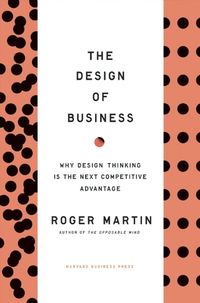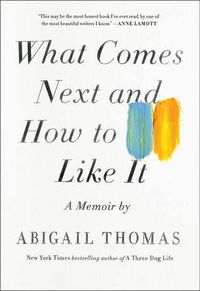
The Design of Business: Why Design Thinking is the Next Competitive Advantage
A Design, Leadership, Nonfiction book. Looking the balance between reliability and validityThis book helps me to understand how to...
Most companies today have innovation envy. They yearn to come up with a game—changing innovation like Apple's iPod, or create an entirely new category like Facebook. Many make genuine efforts to be innovative—they spend on R&D, bring in creative designers, hire innovation consultants. But they get disappointing results.Why? In The Design of Business, Roger Martin offers a compelling and provocative answer: we rely far too exclusively on analytical thinking, which merely refines current knowledge, producing small improvements to the status quo.To innovate and win, companies need design thinking. This form of thinking is rooted in how knowledge advances from one stage to another—from mystery (something we can't explain) to heuristic (a rule of thumb that guides us toward solution) to algorithm (a predictable formula for producing an answer) to code (when the formula becomes so predictable it can be fully automated). As knowledge advances across the stages, productivity grows and costs drop-creating massive value for companies.Martin shows how leading companies such as Procter & Gamble, Cirque du Soleil, RIM, and others use design thinking to push...
Download or read The Design of Business: Why Design Thinking is the Next Competitive Advantage in PDF formats. You may also find other subjects related with The Design of Business: Why Design Thinking is the Next Competitive Advantage.
- Filetype: PDF
- Pages: 208 pages
- ISBN: 9781422177808 / 1422177807
rJsHW4KdYvb.pdf
More About The Design of Business: Why Design Thinking is the Next Competitive Advantage
"As understanding moves from mystery to heuristic to algorithm, extraneous information is pared away; the complexities of the world are mastered through simplification." (12-3)."[N]o new idea could be proved deductively or inductively using past data. Moreover, if new ideas were not the product of the two accepted forms of logic, he... Looking the balance between reliability and validityThis book helps me to understand how to be creative and at the same time make those ideas appealing for an old school or analytical stakeholder. The risk of new needs to be faced and this is a good book to understand how to deal with. A useful explanation of what makes for design thinking. As a design thinker, having some of Martin's articulate words in your head will no doubt be of use when you need to explain what it is you do and how you do it to the more reliability-oriented, deductive thinkers you'll encounter almost every day.Martin goes to great effort to...










